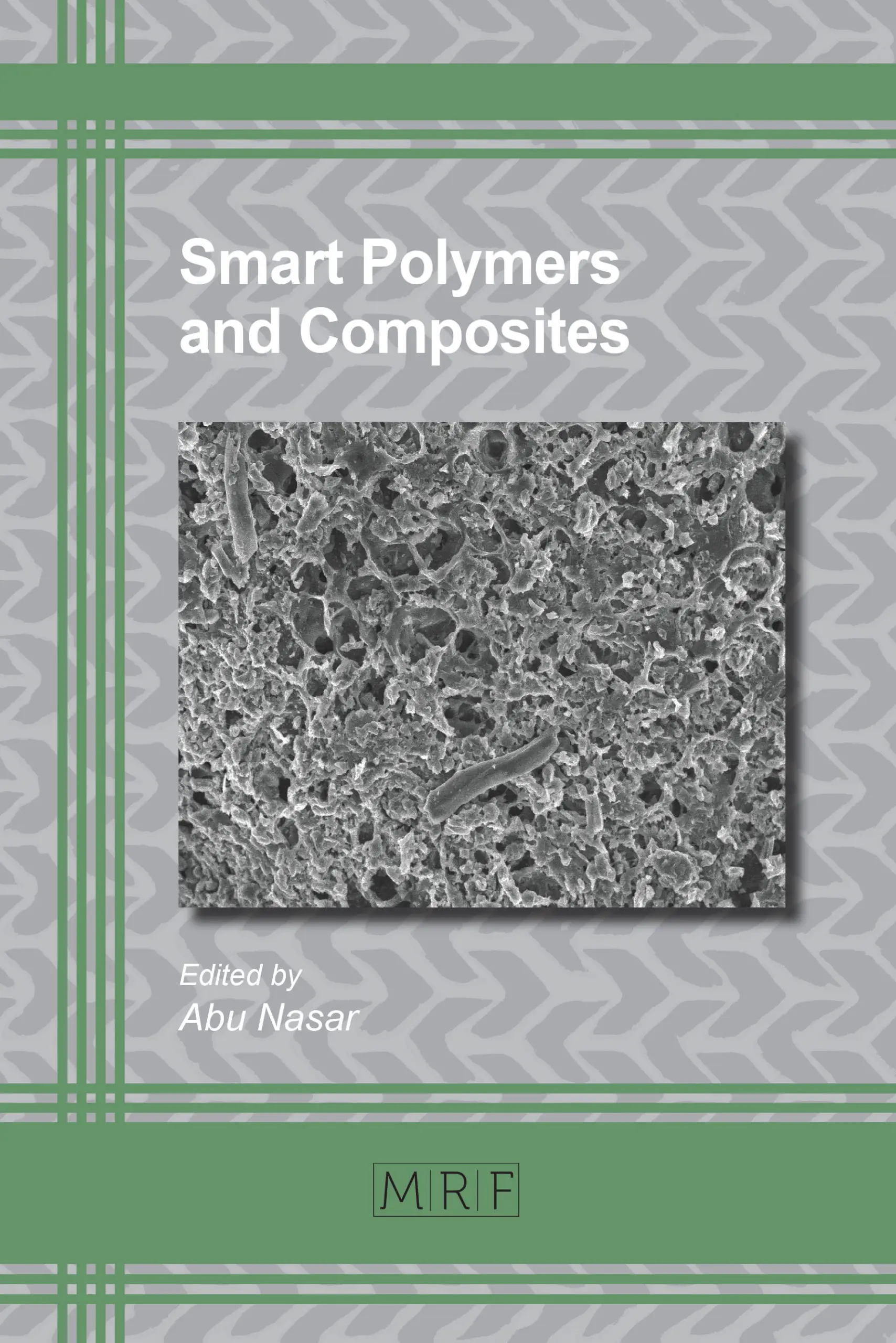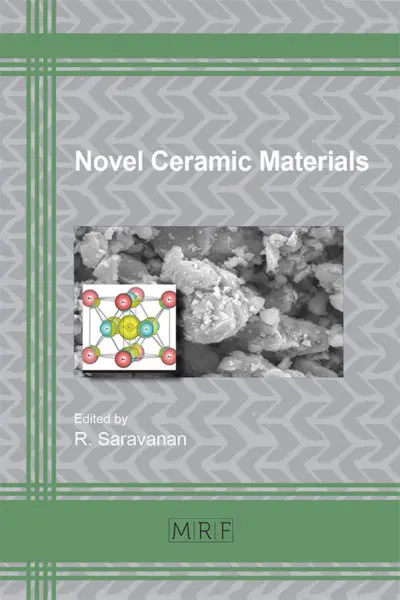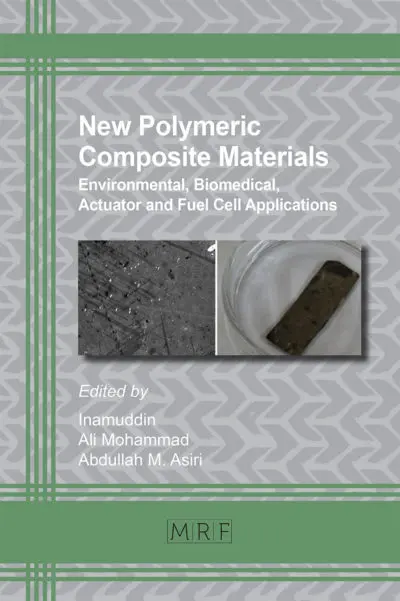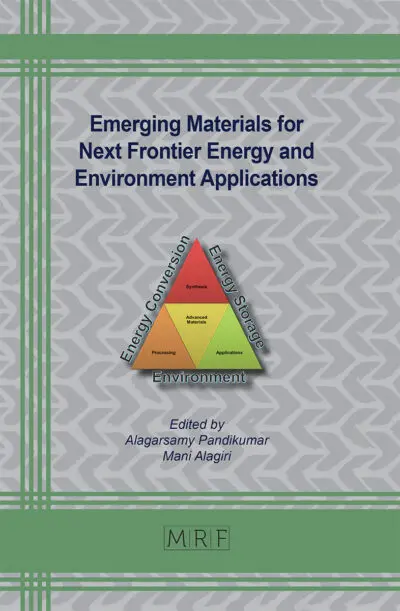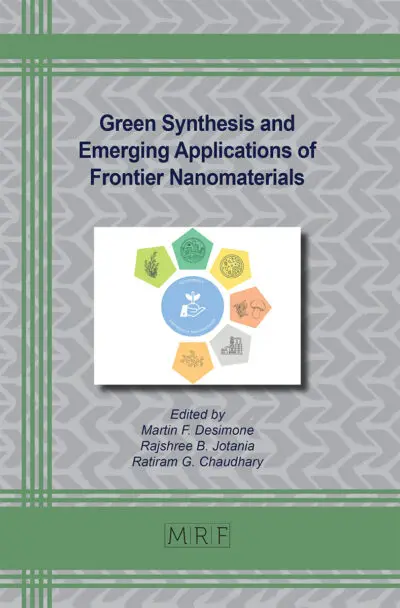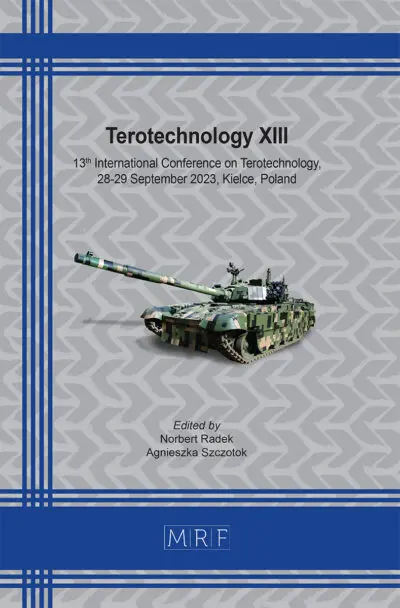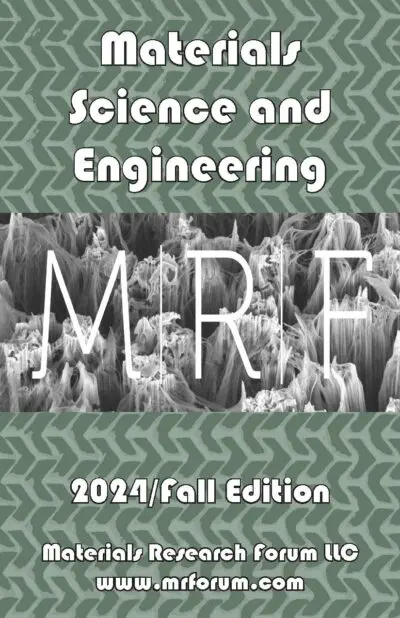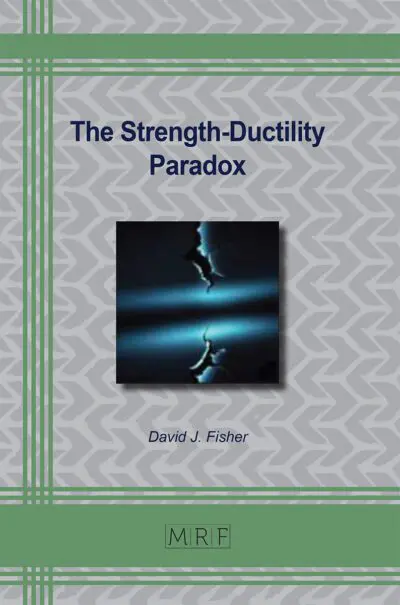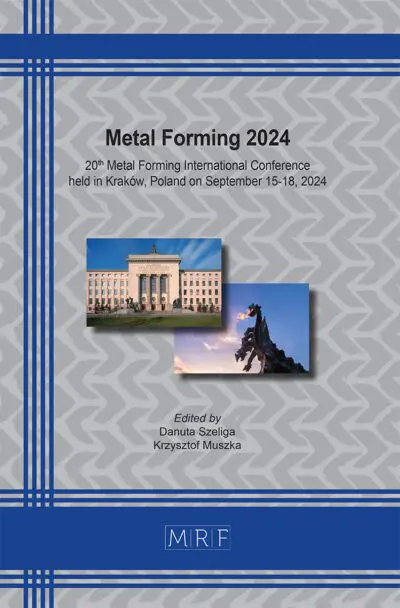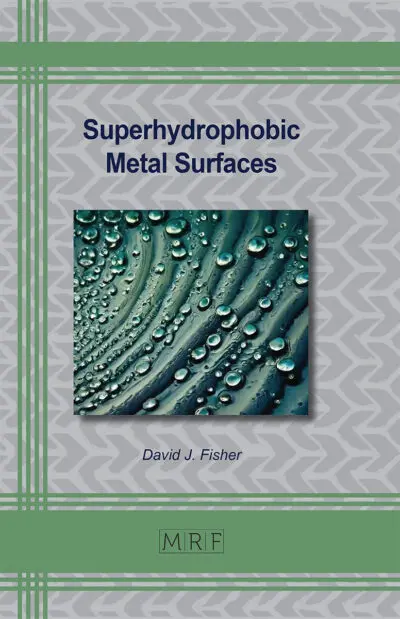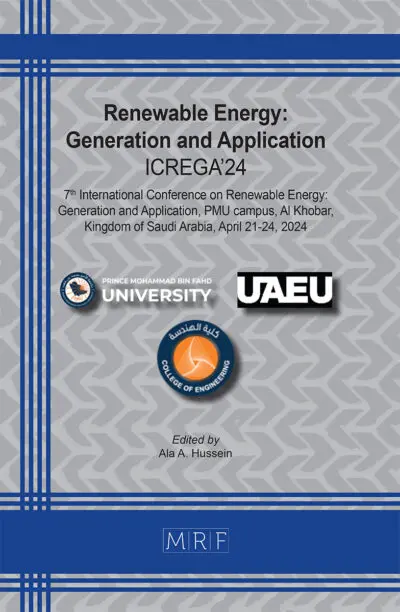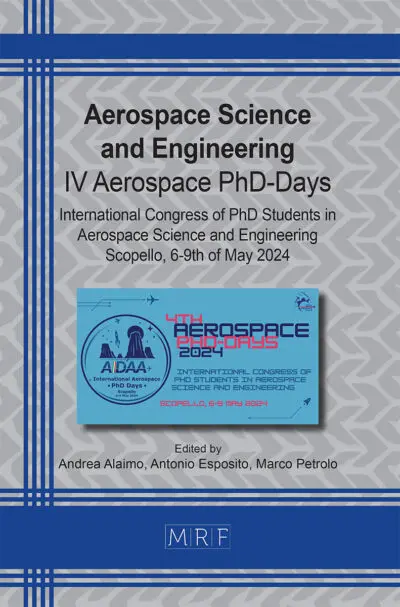Polyaniline (PANI) Based Composites for the Adsorptive Treatment of Polluted Water
Abu Nasar
Adsorption techniques are commonly applied for the treatment of pollutants from wastewater. Different varieties of adsorbents have been used for removing contaminants from aqueous media. Although conventional adsorbents (like activated carbon, alumina, etc.) should be preferable, their extensive application is undesirable because of the high cost and regeneration problems. To overcome these problems, attention has been directed to developing cheaper and efficient alternatives to conventional adsorbents. In this respect, the polyaniline (PANI) based composites offer suitable substitutes for conventional adsorbents due to their special properties such as easy preparation, nontoxicity and availability as active functional groups which have interactions with contaminating molecules and ions. In the present chapter different adsorption parameters, isotherms and kinetics along with their significance are described. Detailed discussions have been dedicated to the applications of PANI-based composites for the adsorptive elimination of dyes and toxic metals. The role of these adsorbents in monitoring of pesticides in water has also been discussed briefly.
Keywords
Wastewater Treatment, PANI-based Composites, Dyes, Heavy Metals, Pesticides
Published online 1/2/2018, 25 pages
DOI: https://dx.doi.org/10.21741/9781945291470-2
Part of Smart Polymers and Composites
References
[1] E.A. Laws, Aquatic Pollution: An Introductory Text, 3rd ed.; John Wiley & Sons: New York, 2000.
[2] H.M. Pignon, C.F. Brasquet, P.L. Cloirec, P. L. (2003). Adsorption of dyes onto activated carbon cloths: Approach of adsorption mechanisms and coupling of ACC with ultrafiltration to treat coloured wastewaters, Sep. Purif. Technol., 31 (2003) 3–11. https://doi.org/10.1016/S1383-5866(02)00147-8
[3] A. Nasar A, S. Shakoor, Remediation of dyes from industrial wastewater using low-cost adsorbents. In “Applications of Adsorption and Ion Exchange Chromatography in Waste Water Treatment” Inamuddin, Al-Ahmed A (eds), Materials Research Foundations, Vol. 15 (2017) 1-33. https://doi.org/10.21741/9781945291333-1
[4] S. Shakoor, A. Nasar, Removal of methylene blue dye from artificially contaminated water using citrus limetta peel waste as a very low cost adsorbent, J. Taiwan Inst. Chem. Eng. 66 (2016), 154–163. https://doi.org/10.1016/j.jtice.2016.06.009
[5] S. Shakoor, A. Nasar, Adsorptive treatment of hazardous methylene blue dye from artificially contaminated water using cucumis sativus peel waste as a low-cost adsorbent, Groundwater Sustain. Develop., 5 (2017) 152–159. https://doi.org/10.1016/j.gsd.2017.06.005
[6] V. Vimonses, B. Jin, C.W.K. Chow, Insight into removal kinetic and mechanisms of anionic dye by calcined clay materials and lime, J. Hazard. Mater., 177 (2010) 420–427. https://doi.org/10.1016/j.jhazmat.2009.12.049
[7] T. Robinson, G. Mcmullan, R. Marchant, P. Nigam, Remediation of dyes in textiles effluent: A critical review on current treatment technologies with a proposed alternative, Bioresour. Technol. 77 (2001) 247–255. https://doi.org/10.1016/S0960-8524(00)00080-8
[8] P.B. Fai, A. Grant, A rapid resazurin bioassay for assessing the toxicity of fungicides, Chemosphere., 74 (2009) 1165-70. https://doi.org/10.1016/j.chemosphere.2008.11.078
[9] T. Perez-Ruiz, C. Martinez-Lozano, A. Sanz, E. Bravo, Determination of organophosphorus pesticides in water, vegetables and grain by automated SPE and MEKC, Chromatographia, 61 (2005) 493–498. https://doi.org/10.1365/s10337-005-0533-8
[10] R. Rezg, B. Mornagui, S. El-Fazaa, N. Gharbi, Organophosphorus pesticides as food chain contaminants and type 2 diabetes: A review, Trends Food Sci. Technol. 21 (2010) 345–357. https://doi.org/10.1016/j.tifs.2010.04.006
[11] J. Fenik, M. Tankiewicz, M. Biziuk, Properties and determination of pesticides in fruits and vegetables, Trends Anal. Chem. 30 (2011) 814–826. https://doi.org/10.1016/j.trac.2011.02.008
[12] A. Agrawal, R.S. Pandey, B. Sharma, water pollution with special reference to pesticide contamination in India, J. Water Resour. Protect. 2 (2010) 432-448. https://doi.org/10.4236/jwarp.2010.25050
[13] T. Ahmad, M. Rafatullah, A. Ghazali, O. Sulaiman, R. Hashim, A. Ahmad, Removal of pesticides from water and wastewater by different adsorbents: a review, Journal of Environmental Science and Health, Part C, 28 (2010) 231-271. https://doi.org/10.1080/10590501.2010.525782
[14] W. Mathys, Pesticide pollution of groundwater and drinking water by the processes of artificial groundwater enrichment or coastal filtration: underrated sources of contamination, Zentralb. Hyg. Umweltmed., 196 (1994) 338-359.
[15] G.H. Willis, L. L. McDowell, Pesticides in agricultural runoff and their effects on downstream water quality, Environ. Toxicol. Chem. 1 (1982) 267-219. https://doi.org/10.1002/etc.5620010402
[16] A.B.P. Marin, V.M. Zapata, J.F. Orturao, M. Aguilar, M.; J. Saez, M. Lloren, Removal of cadmium from aqueous solutions by adsorption on to orange waste, J. Hazard. Mater. 139 (2007) 122-131. https://doi.org/10.1016/j.jhazmat.2006.06.008
[17] F.S. Zhang, J.O. Nriagu, H. Itoh, Mercury removal from water using activated carbons derived from organic sewage sludge, Water. Res. 39 (2005) 389-395. https://doi.org/10.1016/j.watres.2004.09.027
[18] F.S. Zhang, J.O. Nriagu, H. Itoh, Mercury removal from water using activated carbons derived from organic sewage sludge, Water. Res. 39 (2005) 389-395. https://doi.org/10.1016/j.watres.2004.09.027
[19] G. Bayramoglu, M.Y. Arica, Kinetics of mercury ions removal from synthetic aqueous solutions using by novel magnetic p(GMA-MMA-EGDMA) beads, J. Hazard. Mater., 144(2007) 449-457. https://doi.org/10.1016/j.jhazmat.2006.10.058
[20] Sigel, H.; Sigel, A. Concepts on Metal Ion Toxicity; Marcel Dekker, Inc.: New York, 1986.
[21] I. Langmuir, The constitution and fundamental properties of solids and liquids. Part I. Solids., J. Am. Chem. Soc. 38 (1916) 2221–2295. https://doi.org/10.1021/ja02268a002
[22] H.M.F. Freundlich, Über die adsorption in lösungen, Z. Phys. Chem., 57 (1906) 57, 385–470.
[23] M.I. Temkin, V. Pyzhev, Kinetics of ammonia synthesis on promoted iron catalyst. Acta Phys. Chim. USSR., 12 (1940) 217-222.
[24] T.A. Khan, S. Dahiya and I. Ali, Use of kaolinite as adsorbent: Equilibrium, dynamics and thermodynamic studies on the adsorption of Rhodamine B from aqueous solution. Appl. Clay Sci., 69 (2012) 69, 58–66.
[25] F. Kanwal, R. Rehman, T. Mahmud, J. Anwar, R. Ilyas, Isothermal and thermodynamical modeling of chromium (III) adsorption by composites of polyaniline with rice husk and saw dust. J. Chil. Chem. Soc., 57 (2012) 1058-1063. https://doi.org/10.4067/S0717-97072012000100022
[26] J. Li, Y. Huang, and D. Shao, Conjugated polymer-based composites for water purification, in Book entitled “Fundamentals of Conjugated Polymer Blends, Copolymers and Composites: Synthesis, Properties and Applications” Ed. P. Saini, Scrivener Publishing LLC, 2015, pp 581-618.
[27] R. Ansari, Z. Mosayebzadeh, Application of polyaniline as an efficient and novel adsorbent for azo dyes removal from textile wastewaters, Chemical Pap. 65 (2011) 1 -8.
[28] B.N. Patra, D. Majhi, Removal of anionic dyes from water by potash alum doped polyaniline: investigation of kinetics and thermodynamic parameters of adsorption, J. Phys. Chem. B, 119 (2015) 8154-8164. https://doi.org/10.1021/acs.jpcb.5b00535
[29] M.R. Patil, V.S. Shrivastava, Adsorption removal of carcinogenic acid violet 19 dye from aqueous solution by polyaniline-Fe2O3 magnetic nano-composite, J. Mater. Environ. Sci., 6 (2015) 11-21.
[30] A. R. Prasad, A. Joseph, Synthesis, characterization and investigation of methyl orange dye removal from aqueous solutions using waterborne poly vinyl pyrrolidone (PVP) stabilized poly aniline (PANI) core–shell nanoparticles, RSC Adv., 7 (2017) 20960-20968. https://doi.org/10.1039/C7RA01790A
[31] M. Laabd, H. A. Ahsaine, A. E. Jaouhari, B. Bakiz, M. Bazzaoui, M. Ezahri, A. Albourine, A. Benlhachemi, Congo red removal by PANI/Bi2WO6 nanocomposites: Kinetic, equilibrium and thermodynamic studies, J. Environ. Chem. Eng., 4 (2016) 3096-3105. https://doi.org/10.1016/j.jece.2016.06.024
[32] M.B. Keivani, K. Zare, H. Aghaie, R. Ansari, Removal of methylene blue dye by application of polyaniline nano composite from aqueous solutions, J. Phys. Theor. Chem. IAU, 6 (2009) 50-56.
[33] M.R. Patil, V.S. Shrivastava, Adsorptive removal of methylene blue from aqueous solution by polyaniline-nickel ferrite nanocomposite: a kinetic approach, Desal. Water Treat., 57 (2016) 5879-5887. https://doi.org/10.1080/19443994.2015.1004594
[34] V. Janaki, B.T. Oh, K. Shanthi, K.J. Lee, A.K. Ramasamy, S. Kamala-Kannan, Polyaniline/chitosan composite: an eco-friendly polymer for enhanced removal of dyes from aqueous solution, Synth. Met., 162 (2012) 974-980. https://doi.org/10.1016/j.synthmet.2012.04.015
[35] M.M. Ayad, A.A. El-Nasr, J. Stejskal, Kinetics and isotherm studies of methylene blue adsorption onto polyaniline nanotubes base/silica composite, J. Ind. Eng. Chem. 18 (2012) 1964-1969. https://doi.org/10.1016/j.jiec.2012.05.012
[36] M. Shabandokht, E. Binaeian, H.A. Tayeb, Adsorption of food dye Acid red 18 onto polyaniline-modified rice husk composite: isotherm and kinetic analysis, Desal. Water Treat., 57 (2016) 27638-27650. https://doi.org/10.1080/19443994.2016.1172982
[37] S. Dhanavel, E.A.K. Nivethaa, K. Dhanapal, V.K. Gupta, V. Narayan, A. Stephen, α-MoO3/polyaniline composite for effective scavenging of Rhodamine B, Congo red and textile dye effluent, RSC Adv., 34 (2016) 28871-28886. https://doi.org/10.1039/C6RA02576E
[38] P. Kannusamy, T. Sivalingam, Synthesis of porous chitosan–polyaniline/ZnO hybrid composite and application for removal of reactive orange 16 dye, Colloid. Surf. B: Biointerfac. 108 (2013) 229-238. https://doi.org/10.1016/j.colsurfb.2013.03.015
[39] A. Rashidzadeh & A. Olad, Novel polyaniline/poly (vinyl alcohol)/clinoptilolite nanocomposite: dye removal, kinetic, and isotherm studies, Desal. Water Treat., 51 (2013) 7057-7066. https://doi.org/10.1080/19443994.2013.766904
[40] K. Haitham, S. Razak, M.A. Nawi, Kinetics and isotherm studies of methyl orange adsorption by a highly recyclable immobilized polyaniline on a glass plate, Arab. J. Chem. 2014 (In press) https://doi.org/10.1016/j.arabjc.2014.10.010 https://doi.org/10.1016/j.arabjc.2014.10.010
[41] S. A. Jebreil, Removal of tartrazine dye form aqueous solutions by adsorption on the surface of polyaniline/iron oxide composite, Int. J. Chem. Mol. Nucl. Mater. Metall. Eng. 8 (2014) 1433-1438.
[42] F. A. Rafiqi, K. Majid, Sequestration of methylene blue (MB) dyes from aqueous solution using polyaniline and polyaniline–nitroprusside composite, J. Mater. Sci. 52 (2017) 6506–6524. https://doi.org/10.1007/s10853-017-0886-z
[43] M. Mahalakshmi, M. Palanichamy, A. Banumathi, V. Murugesan, ‘Photocatalytic degradation of carbofuran using semiconductor oxides’, J. Hazard. Mater. 143 (2007) 240-245. https://doi.org/10.1016/j.jhazmat.2006.09.008
[44] T. Aungpradit, P. Sutthivaiyakit, D. Martens, S. Sutthivaiyakit, A.A.F. Kettrup, Photocatalytic degradation of triazophos in aqueous titanium dioxide suspension: Identification of intermediates and degradation pathways. J. Hazard. Mater., 146 (2007) 204–213. https://doi.org/10.1016/j.jhazmat.2006.12.007
[45] P. Saritha, C. Aparna, V. Himabindu, Y. Anjaneyulu, Comparison of various advanced oxidation processes for the degradation of 4-chloro-2 nitrophenol, J. Hazard.Mater., 149 (2007) 609–614. https://doi.org/10.1016/j.jhazmat.2007.06.111
[46] A.L. Ahmad, L.S. Tan, S.R.A. Shukor, Dimethoate and atrazine retention from aqueous Solution by nanofiltration membranes, J. Hazard. Mater., 151 (2008) 71–77. https://doi.org/10.1016/j.jhazmat.2007.05.047
[47] M.H.M. Rajashekara, H.K. Manonmani, Aerobic degradation of technical hexachlorocyclohexane by a defined microbial consortium, J. Hazard. Mater., 149 (2007) 18–25. https://doi.org/10.1016/j.jhazmat.2007.03.053
[48] C. Masselon, G. Krier, J.F. Muller, S. Nelieu, J. Einhorn, Laser desorption Fourier transformation cyclotron resonance mass spectrometry of selected pesticides extracted on C18 silica solid-phase extraction membranes. Analyst. 121 (1996) 1429–1433. https://doi.org/10.1039/AN9962101429
[49] A.J.M. Lagadec, D.J. Miller, A.V. Lilke, S.B. Hawthorne, Pilot-scale subcritical water remediation of polycyclic aromatic hydrocarbons- and pesticide-contaminated soil, Environ. Sci. Technol. 34 (2000) 1542–1548. https://doi.org/10.1021/es990722u
[50] Qamruzzaman, A. Nasar, Degradation of tricyclazole by colloidal manganese dioxide in the absence and presence of surfactants. J. Ind. Eng. Chem. 20 (2014) 897–902. https://doi.org/10.1016/j.jiec.2013.06.020
[51] Qamruzzaman, A. Nasar, Treatment of acetamiprid insecticide from artificially contaminated water by colloidal manganese dioxide in the absence and presence of surfactants, RSC Adv. 4 (2014) 62844–62850.
[52] Qamruzzaman, A. Nasar, Kinetics of metribuzin degradation by colloidal manganese dioxide in absence and presence of surfactants. Chemical Pap. 68 (2014) 65–73.
[53] Qamruzzaman, A. Nasar, Degradation of acephate by colloidal manganese dioxide in the absence and presence of surfactants. Desal. Water Treat., 55 (2015) 2155–2164. https://doi.org/10.1080/19443994.2014.937752
[54] Qamruzzaman, A. Nasar, Degradation of methomyl by colloidal manganese dioxide in acidic medium, Chem. Sci. Rev. Lett., 1 (2012) 113-119.
[55] M.M.B. Martın, J.A.S. Perez, J.L.G. Sanchez, L.M. Oca, J.L.C. Lopez, I. Oller, S.M. Rodrıguez, Degradation of alachlor and pyrimethanil by combined photo-fenton and biological oxidation. J. Hazard. Mater., 155 (2008) 342-349. https://doi.org/10.1016/j.jhazmat.2007.11.069
[56] V.F. Dominquis, G. Priolo, A.C. Alves, M.F. Cabral, C. Deleure-Matos, Adsorption behavior of α-cypermethrin on cork and activated carbon, J Environ. Sci. Health B, 42 (2007) 649-654. https://doi.org/10.1080/03601230701465635
[57] M. Akhtar M, S.M. Hasany, M.I. Bhanger, S. Iqbal, Low cost sorbents for the removal of methyl parathion pesticide from aqueous solutions, Chemosphere, 66 (2007) 1829-1838. https://doi.org/10.1016/j.chemosphere.2006.09.006
[58] G.Z. Memon, M.I. Bhanger, M. Akhtar, The removal efficiency of chestnut shells for selected pesticides from aqueous solutions. J Colloid Interface Sci., 315 (2007) 33-40. https://doi.org/10.1016/j.jcis.2007.06.037
[59] G.Z. Memon, M.I. Bhanger, M. Akhtar, F.N. Talpur, J.R. Memon, Adsorption of methyl parathion pesticide from water using watermelon peels as a low cost adsorbent, Chem. Eng. J., 138 (2008) 616-621. https://doi.org/10.1016/j.cej.2007.09.027
[60] M.S. Rodriguez-Cruz, M.S. Andrades, A.M. Parada, M.J. Sanchez-Martin, Effect of different wood pretreatments on the sorption-desorption of linuron and metalaxyl by woods, J. Agric. Food. Chem., 56 (2008) 7339-7346. https://doi.org/10.1021/jf800980w
[61] J. Ludvıka, P. Zuman, Adsorption of 1, 2, 4-triazine pesticides metamitron and metribuzin on lignin, Microchem. J., 64 (2000) 15-20. https://doi.org/10.1016/S0026-265X(99)00015-6
[62] X. Yang, K. Qiao, Y. Ye, M. Yang, J. Li, H. Gao, S. Zhang, W. Zhou, R. Lu, Facile synthesis of multifunctional attapulgite/Fe3O4/polyaniline nanocomposites for magnetic dispersive solid phase extraction of benzoylurea insecticides in environmental water samples, Anal. Chim. Acta., 934 (2016) 114-121. https://doi.org/10.1016/j.aca.2016.06.027
[63] A. Mehdinia, Preconcentration and determination of organochlorine pesticides in seawater samples using polyaniline/polypyrrole-cellulose nanocomposite-based solid phase extraction and gas chromatography-electron capture detection, J. Braz. Chem. Soc., 25 (2014) 2048-2053. https://doi.org/10.5935/0103-5053.20140190
[64] Y. Wang, J. Jin, C. Yuan, F. Zhang, L. Ma, D. Qin, D. Shan, X. Lu, A novel electrochemical sensor based on zirconia/ordered macroporous polyaniline for ultrasensitive detection of pesticides, Analyst, 140 (2015) 140, 560-566.
[65] J.M.P.J. Garrido, V. Rahemi, F. Borges, C.M.A. Brett, E.M.P.J. Garrido, Carbon nanotube β-cyclodextrin modified electrode as enhanced sensing platform for the determination of fungicide pyrimethanil, Food Control, Volume 60, February 2016, Pages 7-11. https://doi.org/10.1016/j.foodcont.2015.07.001
[66] I. Cesarino, F.C. Moraes, S.A. Machado, a biosensor based on polyaniline-carbon nanotube core-shell for electrochemical detection of pesticides, Electroanal. 23 (2011) 2586-2593. https://doi.org/10.1002/elan.201100161
[67] H. Javadian, P. Vahedian, M. Toosib, Adsorption characteristics of Ni(II) from aqueous solution and industrial wastewater onto Polyaniline/HMS nanocomposite powder, Appl. Surf. Sci., 284 (2013) 13-22. https://doi.org/10.1016/j.apsusc.2013.06.111
[68] S. Zhang, M. Zeng, W. Xu, J. Li, J. Li, J. Xu, X. Wang, Polyaniline nanorods dotted on graphene oxide nanosheets as a novel super adsorbent for Cr(VI)., Dalton Trans., 42 (2013) 7854-7858. https://doi.org/10.1039/c3dt50149c
[69] J. Chen, X. Q. Hong, Y. T. Zhao, Y. Y. Xia, D. K. Li, Q. F. Zhang, Preparation of flake-like polyaniline/montmorillonite nanocomposites and their application for removal of Cr(VI) ions in aqueous solution, J. Mater. Sci., 48 (2013) 7708-7717. https://doi.org/10.1007/s10853-013-7591-3
[70] H. Cui, Y. Qian, Q. Li, Q. Zhang, J. P. Zhai, Adsorption of aqueous Hg(II) by a polyaniline/attapulgite composite, Chem. Eng. J., 211 (2012) 216-223. https://doi.org/10.1016/j.cej.2012.09.057
[71] M. S. Mansour, M. E. Ossman, H. A. Farag, Removal of Cd (II) ion from waste water by adsorption onto polyaniline coated on sawdust, Desalination, 272 (2011) 301-305. https://doi.org/10.1016/j.desal.2011.01.037
[72] D. L. Liu, D. Z. Sun, Modeling adsorption of Cu(II) using polyaniline-coated sawdust in a fixed-bed column. Environ. Eng. Sci., 29 (2012) 461-465. https://doi.org/10.1089/ees.2010.0435
[73] D. D. Shao, C. L. Chen, X. K. Wang, Application of polyaniline and multiwalled carbon nanotube magnetic composites for removal of Pb(II), Chem. Eng. J., 185 (2012) 144-150. https://doi.org/10.1016/j.cej.2012.01.063
[74] E. Igberase, P. Osifo, Equilibrium, kinetic, thermodynamic and desorption studies of cadmium and lead by polyaniline grafted cross-linked chitosan beads from aqueous solution, J. Indust. Eng. Chem., 26 (2015) 340-347. https://doi.org/10.1016/j.jiec.2014.12.007

